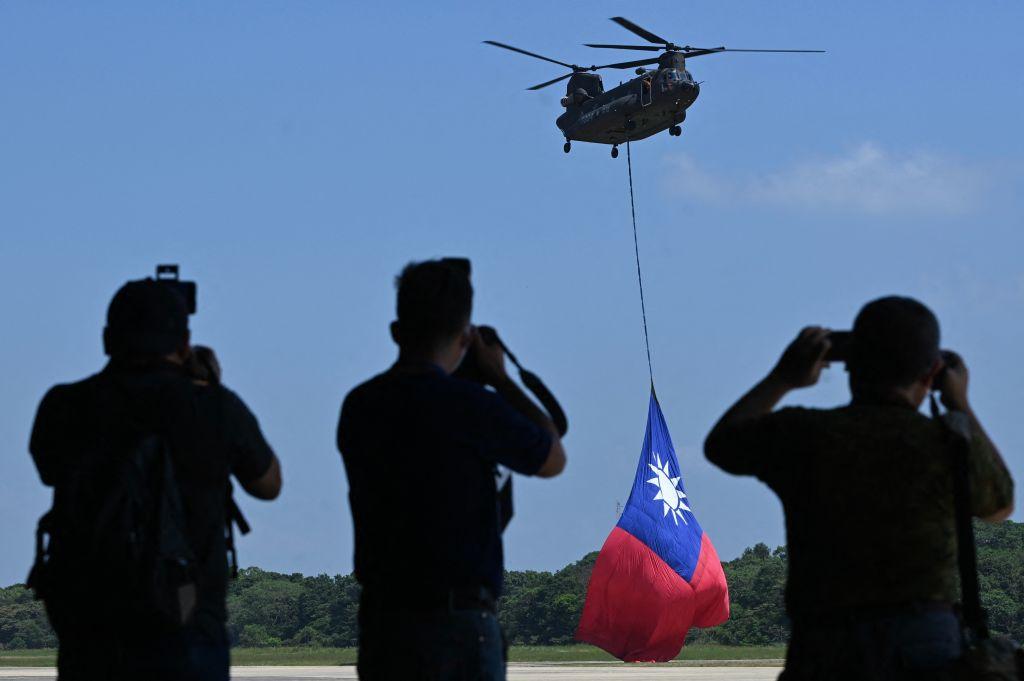
In this month’s AUSMIN statement, somewhat overshadowed by AUKUS and Australia’s decision to purchase nuclear-powered submarines, was a notably robust paragraph about Taiwan. The statement used new phraseology, describing Taiwan as ‘a leading democracy and a critical partner’. It was a step forward from the 2020 AUSMIN statement and also one of a number of bilateral and multilateral statements from countries, led by the United States, that have signalled concern for the security of Taiwan. The statements have come about in response to a step-up in tactics by Beijing over more than a year, including naval exercises and almost daily provocative military flights in the Taiwan Strait.
In addition to these statements, Australia and Taiwan have had publicly acknowledged ministerial-level bilateral meetings on trade and investment. Australian Trade Minister Dan Tehan has met virtually with John Deng, Taiwan’s chief trade negotiator, and Economic Development Minister Wang Mei-hua, and also addressed the Australia–Taiwan Business Council’s annual meeting in August.
Although government-to-government contact is a normal part of Australia–Taiwan relations under Australia’s ‘one China’ policy, Beijing objects to any actions by governments that treat Taiwan as if it’s a sovereign state in the international system. Ministerial-level contact can be especially sensitive and hasn’t always been conducted so visibly by Australia. By holding meetings on bilateral trade, Canberra is pushing back against Beijing’s perennial efforts to isolate Taipei, aligning Australia’s international trade policy with regional security policy and giving substance to statements like that from AUSMIN.
This is an interesting echo of an earlier period in Australia–Taiwan relations. In the 1990s, a new post–Cold War global trade architecture was built that created an impetus for boosting relations. This included the establishment of APEC in 1989 and the World Trade Organization in 1995. Taiwan acceded to APEC in 1991 as ‘Chinese Taipei’. In 1992, an Australia–Taiwan bilateral dialogue was established called the Joint Energy and Minerals, Trade and Investment Cooperation Consultations, or JEMTIC, which continues today.
Both Australia and Taiwan aligned their relationship through the vector of trade and investment in the era of ‘globalisation’. Each side did, however, have different motivations for doing so. For Taipei, the 1990s multilateral trade framework was a way of maintaining an international presence as it was losing diplomatic allies to Beijing. For Canberra, APEC in particular was a regional grouping that mobilised Australia’s shift to a more open and deregulated export-oriented political economy.
In 1996, Australian exports to China exceeded those to Taiwan for the first time. They have since grown to more than 30% of Australia’s exports. (At that time, Japan was Australia’s biggest market at only 16% of total exports.) The alignment between Australia and Taiwan passed and a range of problems emerged in the relationship in the 2000s, including concerns about the status of ANZUS in a conflict over Taiwan and chequebook diplomacy in the Pacific.
Now, however, in the context of the deterioration of Australia–China relations and Beijing’s military provocations towards Taiwan, the ministerial trade meetings this year point to a new alignment, and potentially a less ephemeral one than in the 1990s.
The test of this moment will be the Comprehensive and Progressive Agreement for Trans-Pacific Partnership, or CPTPP. After a number of years of diplomatic manoeuvring, both Beijing and Taipei have played their hands and formally applied to join. Like its participation in the international trade architecture of the 1990s, Taiwan’s calculus includes an opportunity to expand its international presence. China’s calculus includes shutting Taiwan out of any regional institutions now that it has the economic power to act in ways that it could not 30 years ago.
Australia’s support for Taiwan’s and China’s membership of the CPTPP will be a test of how it judges its trade and regional security interests and how far it is willing to go to align them. For Australia and the other members of the CPTPP, the outcome will be a complex measure of policy priorities and principles, and will be a marker of the contours of power in the international system in the era of China under Xi Jinping.
One of the more interesting ministerial meetings this year was the Australia–Taiwan Hydrogen Trade and Investment Dialogue in July. Hydrogen is a critical technology in the transition to low-carbon energy. As important as the CPTPP may be for mapping a changing international order, in the face of foundational global challenges like climate change, it may be that trade in specific commodities matters more than broad principles of regional free trade for connecting trade and security and strengthening Taiwan’s bilateral relations. The semiconductor industry is an obvious example. Here, Taiwan is the global giant and China is less consequential, and post-carbon-economy sectors may yet be a vector through which Australia sees its interests being served by a strong bilateral relationship with Taiwan.